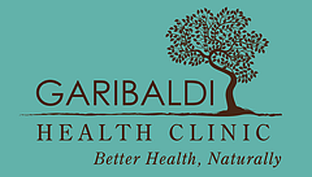Celiac Disease
Grain is normally an important source of nutrition, but for those with celiac disease it can actually do nutritional harm. Celiac disease is a chronic disorder caused by an intolerance to gluten, a protein component of many cereal grains, including wheat, oats and barley, kamut and spelt. This intolerance damages the lining of the small intestine, preventing the absorption of nutrients.
Because they are such a big part of our diet, isolating grains as the cause of symptoms is challenging, but confirming celiac disease as the root problem is harder still, since not every case of gluten intolerance is due to the condition. An estimated 90% of celiac cases go undiagnosed, and on average a correct diagnosis takes nine years. The disease is often misdiagnosed as fibromyalgia or chronic fatigue, among other illnesses.
What makes celiac diagnosis even tougher is the large range of potential symptoms. These include pale, greasy, foul-smelling stool, weight loss and multiple vitamin and mineral deficiencies. Low levels of protein, carbohydrate and fat are also common, along with fatigue, abdominal pain and frequent infections. In infants, the condition can affect both physical and mental development.
In Canada, celiac disease affects seven of every one thousand people. Symptoms most often appear before the age of three and correspond with the introduction of cereals to the diet. A second peak occurs in the third decade of life.
The cause of the disease is unknown, but there are indications that it is an autoimmune illness with a strong genetic component. Breastfeeding appears to have a prophylactic effect, particularly when continued after the infant begins eating grains. The early introduction of cow’s milk, on the other hand, seems to increase risk.
Blood work can detect symptoms including vitamin and mineral deficiencies, low haemoglobin and the presence of certain antibodies, and may also reveal a genetic predisposition to the disease. Only an intestinal biopsy, however, can distinguish between celiac and simple gluten intolerance.
Celiac disease has no cure and keeping the condition under control involves lifelong dietary and lifestyle changes. Eliminating gluten from the diet can reduce symptoms in as little as three days, although some patients take up to three years to respond. Many people also experience improvement when they quit dairy products. Vitamin and mineral supplements help correct underlying deficiencies, and omega 3 and L-glutamine reduce inflammation and mend intestinal damage.
Small amounts of gluten are found in everything from ice cream to beer, so celiac patients must learn to be careful label readers. Gluten is also used as a binder in many household products, including pharmaceuticals, cosmetics, toothpaste and shampoo. Even cross-contamination from cutting boards, colanders and utensils poses a risk.
The good news is that celiac disease is controllable. Patients on a gluten-free diet achieve normal mortality within a year. In time, most symptoms recede and patients return to excellent health.
©Dr. Gordon, 2011.

